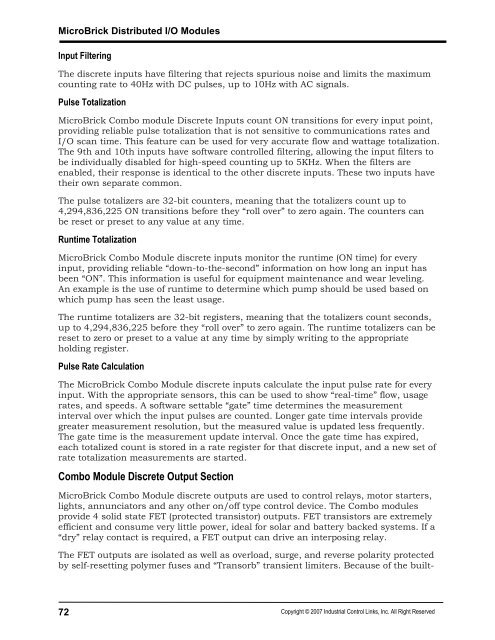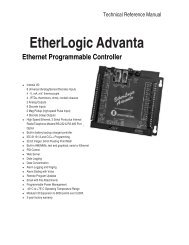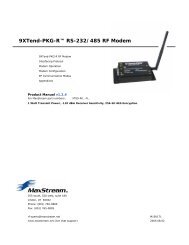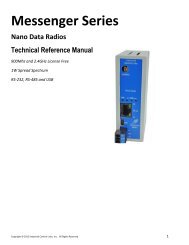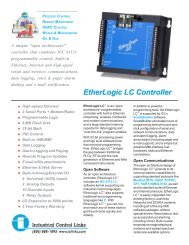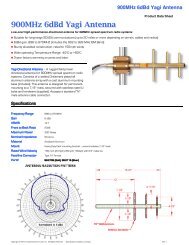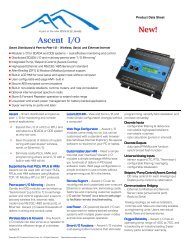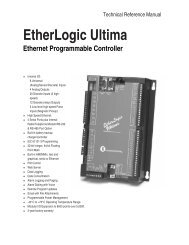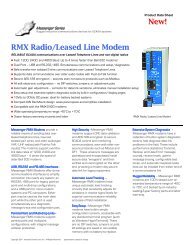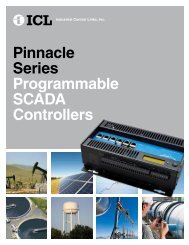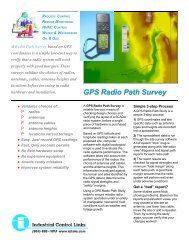MicroBrick I/O - Industrial Control Links
MicroBrick I/O - Industrial Control Links
MicroBrick I/O - Industrial Control Links
You also want an ePaper? Increase the reach of your titles
YUMPU automatically turns print PDFs into web optimized ePapers that Google loves.
<strong>MicroBrick</strong> Distributed I/O ModulesInput FilteringThe discrete inputs have filtering that rejects spurious noise and limits the maximumcounting rate to 40Hz with DC pulses, up to 10Hz with AC signals.Pulse Totalization<strong>MicroBrick</strong> Combo module Discrete Inputs count ON transitions for every input point,providing reliable pulse totalization that is not sensitive to communications rates andI/O scan time. This feature can be used for very accurate flow and wattage totalization.The 9th and 10th inputs have software controlled filtering, allowing the input filters tobe individually disabled for high-speed counting up to 5KHz. When the filters areenabled, their response is identical to the other discrete inputs. These two inputs havetheir own separate common.The pulse totalizers are 32-bit counters, meaning that the totalizers count up to4,294,836,225 ON transitions before they “roll over” to zero again. The counters canbe reset or preset to any value at any time.Runtime Totalization<strong>MicroBrick</strong> Combo Module discrete inputs monitor the runtime (ON time) for everyinput, providing reliable “down-to-the-second” information on how long an input hasbeen “ON”. This information is useful for equipment maintenance and wear leveling.An example is the use of runtime to determine which pump should be used based onwhich pump has seen the least usage.The runtime totalizers are 32-bit registers, meaning that the totalizers count seconds,up to 4,294,836,225 before they “roll over” to zero again. The runtime totalizers can bereset to zero or preset to a value at any time by simply writing to the appropriateholding register.Pulse Rate CalculationThe <strong>MicroBrick</strong> Combo Module discrete inputs calculate the input pulse rate for everyinput. With the appropriate sensors, this can be used to show “real-time” flow, usagerates, and speeds. A software settable “gate” time determines the measurementinterval over which the input pulses are counted. Longer gate time intervals providegreater measurement resolution, but the measured value is updated less frequently.The gate time is the measurement update interval. Once the gate time has expired,each totalized count is stored in a rate register for that discrete input, and a new set ofrate totalization measurements are started.Combo Module Discrete Output Section<strong>MicroBrick</strong> Combo Module discrete outputs are used to control relays, motor starters,lights, annunciators and any other on/off type control device. The Combo modulesprovide 4 solid state FET (protected transistor) outputs. FET transistors are extremelyefficient and consume very little power, ideal for solar and battery backed systems. If a“dry” relay contact is required, a FET output can drive an interposing relay.The FET outputs are isolated as well as overload, surge, and reverse polarity protectedby self-resetting polymer fuses and “Transorb” transient limiters. Because of the built-72Copyright © 2007 <strong>Industrial</strong> <strong>Control</strong> <strong>Links</strong>, Inc. All Right Reserved


